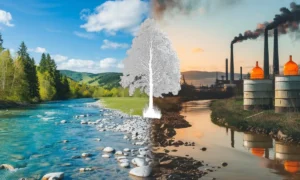Arctic Tundra Is Now a Carbon Source – Here’s Why It’s a Global Red Alert

The Arctic tundra, once a carbon sink, is now becoming a source of carbon dioxide emissions due to warming and wildfires, this is according to NOAA’s 2024 Arctic Report Card. This shift adds to climate change impacts as the atmosphere has to absorb more heat-trapping gases from Earth’s carbon sources.
Arctic tundra has been a carbon dioxide storage front for millennia storing the potent greenhouse gas in the frozen soil. Earth’s atmosphere is already under stress absorbing record levels of greenhouse gas emissions emitted mainly from human activities.
Such climate shifts will force humans, plants and animals to adapt to new climate patterns that are warmer, wetter and unpredictable. Most of these changes are rapid and on the global scale that makes climate adaptation measures extremely difficult for the affected populations and ecosystems.
Circumpolar wildfires in the Arctic have released an average of 207 million tons of carbon annually since 2003, says the NOAA’s report.
NOAA Administrator Rick Spinrad, Ph.D stats,
“Our observations now show that the Arctic tundra, which is experiencing warming and increased wildfire, is now emitting more carbon than it stores, which will worsen climate change impacts.”
Key Findings of 2024 Arctic Report Card
The report, based on research by 97 scientists from 11 countries, highlights:
- Increased wildfires have influenced the Arctic tundra from a carbon sink into a carbon source, releasing an average of 207 million tons of carbon annually since 2003.
- Arctic annual surface air temperatures ranked second-warmest since 1900.
- Arctic remains a consistent source of methane.
- September 2024 sea ice extent was the sixth-lowest on record. Greenland Ice Sheet mass loss was the lowest since 2013
- The past nine years have been the warmest on record in the Arctic.
- Summer 2024 was the wettest ever recorded in the Arctic.
- The 2023-2024 winter saw above-average snow in the Arctic, but parts of Canada had the shortest snow season in 26 years, with melt occurring 1-2 weeks earlier than usual.
- Arctic migratory tundra caribou populations have declined by 65% over the last 2-3 decades.
According to Alaska Biological Research’s senior scientist and one of the author of the Arctic Report Card, Gerald (J.J.), “…recent extreme years are the result of long-term, persistent changes, and not the result of variability in the climate system.”

2024 has been a year of extremes. Fossil fuel consumption has surged resulting in an increase in greenhouse gas emissions which are yet to peak. The year 2024 is now certain to be the warmest on record and first year on record to breach the Paris Agreement’s 1.5 degree Celsius target. With COP29 failing to deliver big on climate finance requirements, vulnerable communities are left facing even greater risks from climate change without the necessary financial support for adaptation and mitigation.
References: NOAA 2024 Arctic Report Card.






